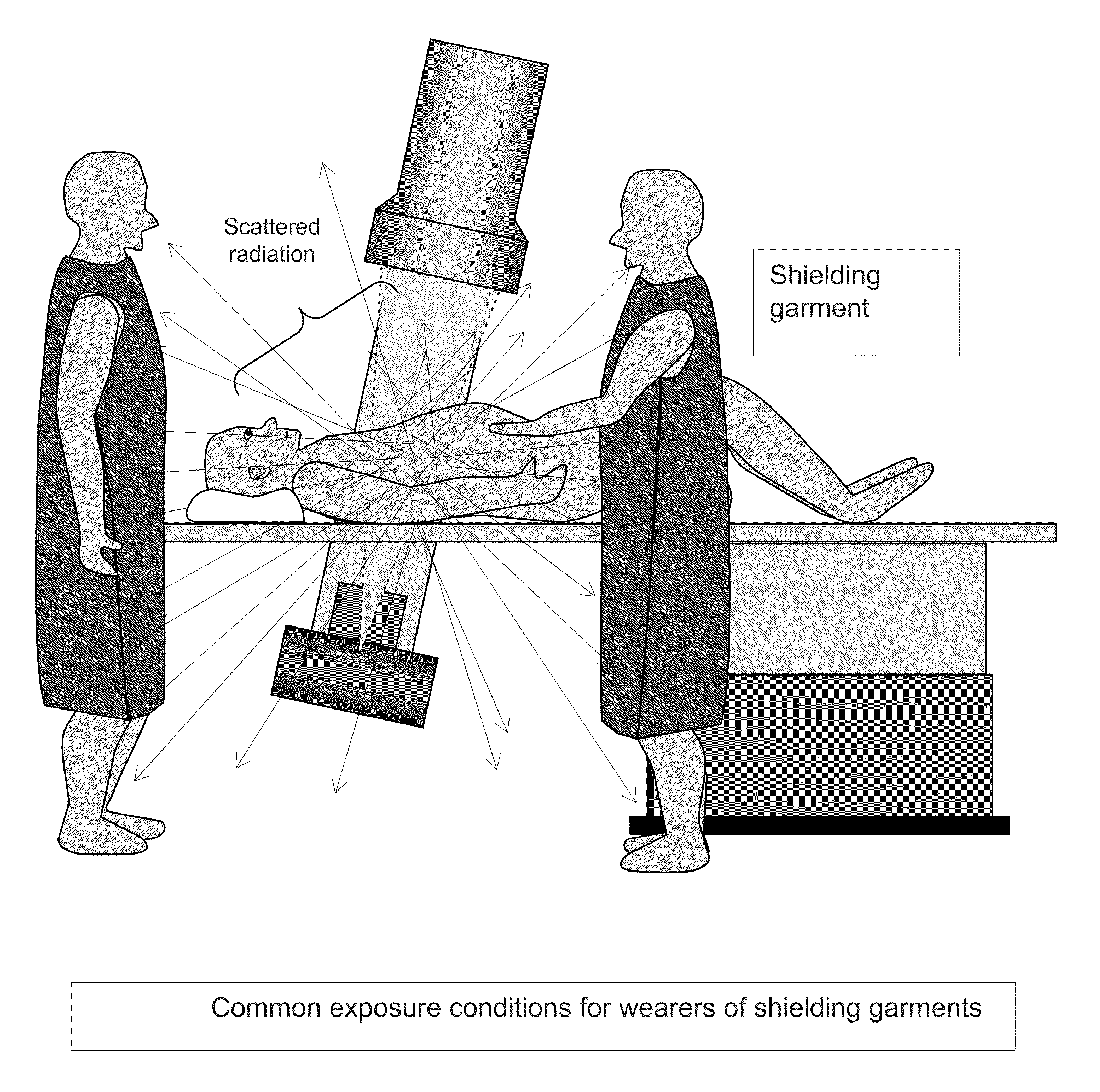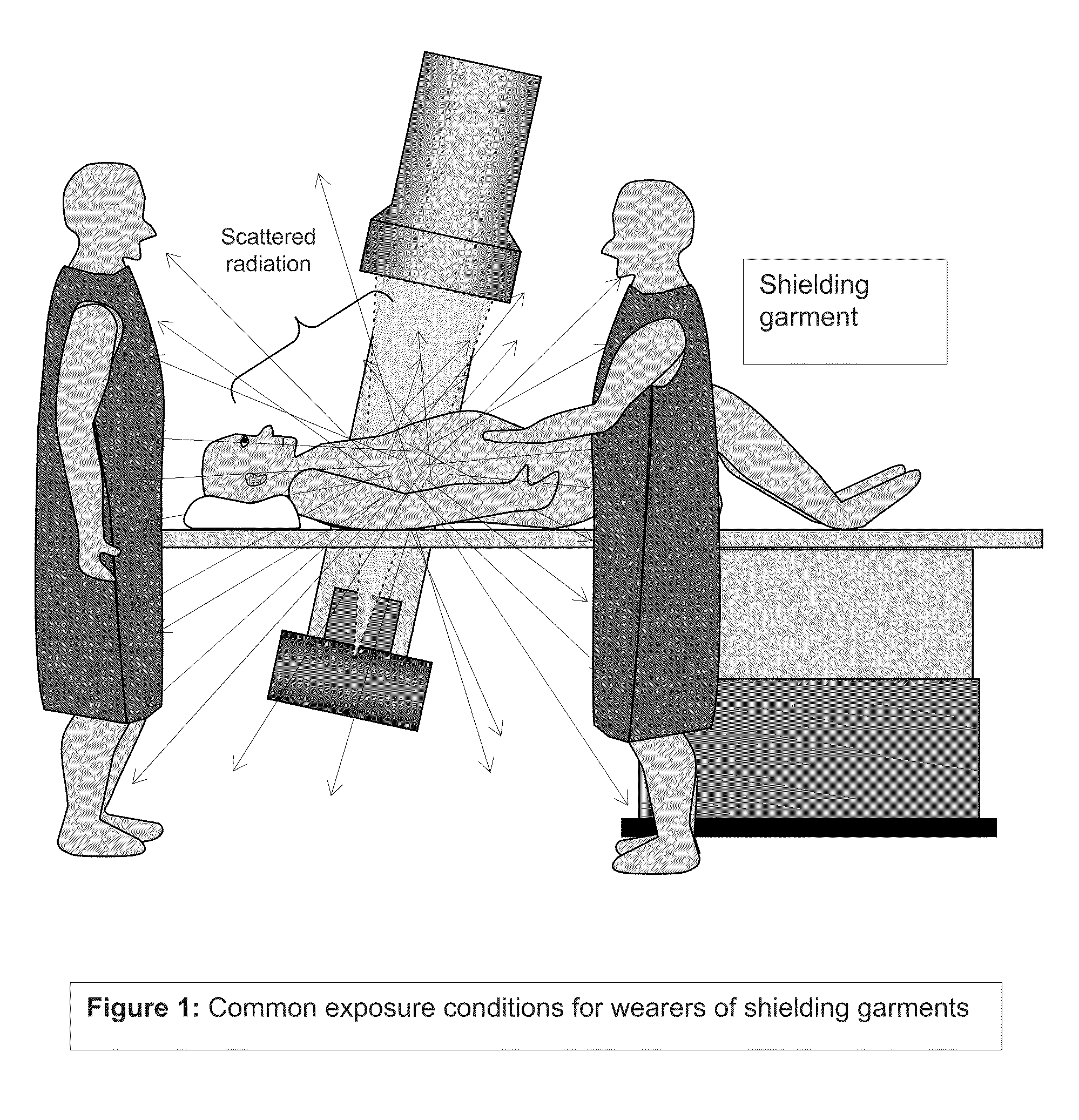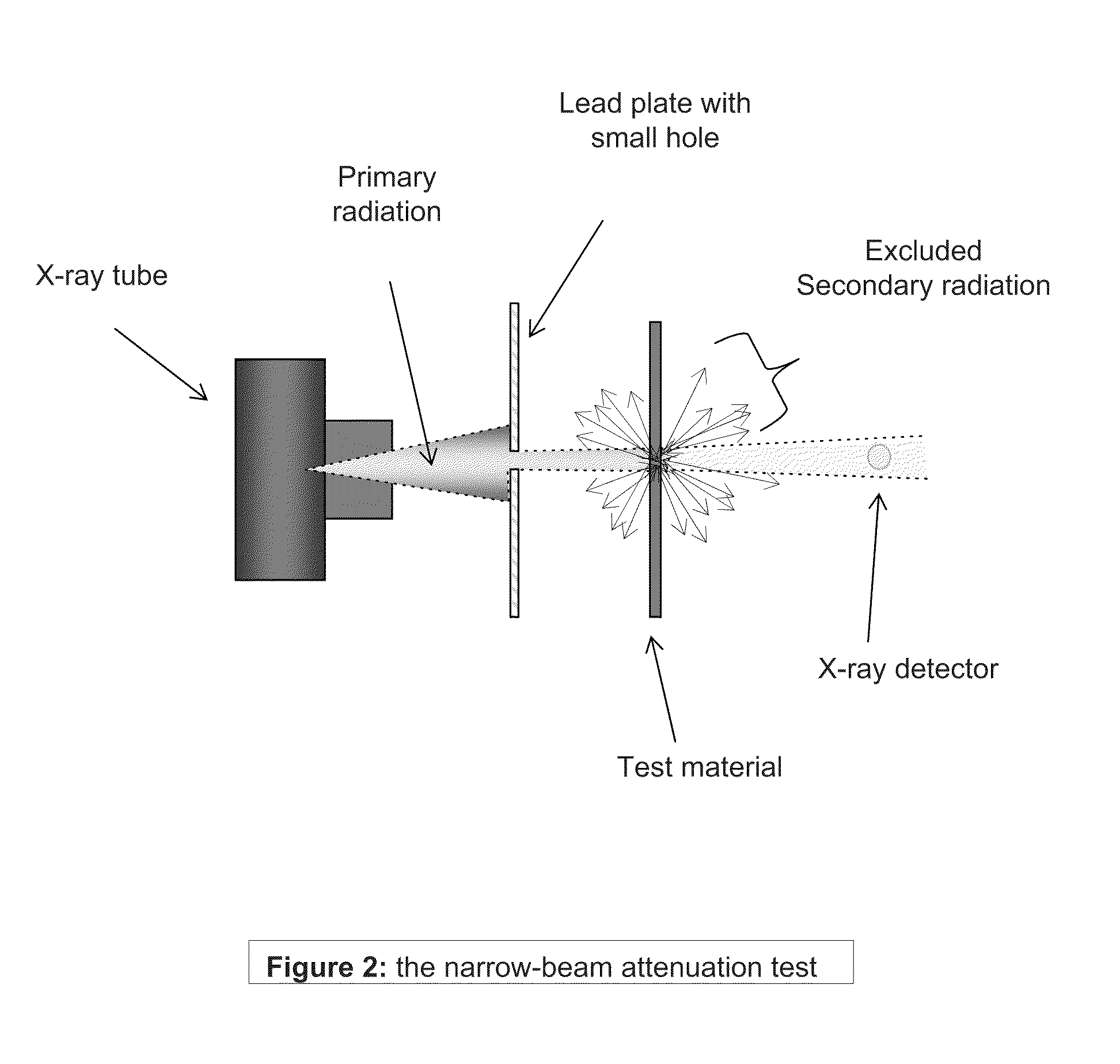Multi-layer light-weight garment material with low radiation buildup providing scattered-radiation shielding
- Summary
- Abstract
- Description
- Claims
- Application Information
AI Technical Summary
Benefits of technology
Problems solved by technology
Method used
Image
Examples
example 1
Two Layers with Gadolinium and Antimony
[0035]This example is made of two separate layers. The outer layer would contain gadolinium, in powder form, as either metal or as gadolinium oxide or a salt of gadolinium. The gadolinium weight percentage would be in the range of 60% to 90% dispersed in a flexible vinyl matrix or other flexible matrix, such as an elastomer or polyolefin. The inner layer would consist of antimony in the weight percentage range of 90% to 60% in a flexible polymer matrix.
[0036]The cumulative effect of the two layers would reduce the net exposure of the wearer of the apron to the reference scatter beam resulting from the broad beam x-ray conditions by 90% or more (FIG. 4) but with reduced weight compared to equivalent protection provided by a shielding garment apron containing only lead.
example 2
Two Layer with Barium and Antimony
[0037]This example is made of two separate layers. The outer layer would contain barium in powder form as either metal or as barium oxide or barium sulfate. The barium weight percentage would be in the range of 60% to 90% dispersed in a flexible vinyl matrix or other flexible matrices such as an elastomer or polyolefin. The inner layer would consist of antimony in the weight percentage range of 90% to 60% in a similar flexible polymer matrix.
[0038]The cumulative effect of the two layers would reduce the net exposure of the wearer of the apron to the reference scatter beam resulting from the broad beam x-ray conditions by 90% or more (FIG. 4) but with reduced weight compared to equivalent protection provided by a shielding garment apron containing only lead.
example 2a
Two Layer with a Thallium and Antimony Barrier Layer
[0039]A two layer X-Ray Protective apron where:
[0040]The “secondary layer” would consist of antimony in the weight percentage range of 60% to 90% in a flexible polymer matrix and barium weight range of 5% to 35% dispersed in a flexible vinyl matrix, or other flexible matrices such as an elastomer.
[0041]The “barrier layer” would contain antimony in the weight percentage range of 30% to 60% and thallium in the weight range of 70% to 40% dispersed in a flexible vinyl matrix or other flexible matrices such as elastomers.
[0042]For clothing made from these two-layer examples, the barrier layer is closest to the wearer's body.
PUM
 Login to View More
Login to View More Abstract
Description
Claims
Application Information
 Login to View More
Login to View More - R&D
- Intellectual Property
- Life Sciences
- Materials
- Tech Scout
- Unparalleled Data Quality
- Higher Quality Content
- 60% Fewer Hallucinations
Browse by: Latest US Patents, China's latest patents, Technical Efficacy Thesaurus, Application Domain, Technology Topic, Popular Technical Reports.
© 2025 PatSnap. All rights reserved.Legal|Privacy policy|Modern Slavery Act Transparency Statement|Sitemap|About US| Contact US: help@patsnap.com



